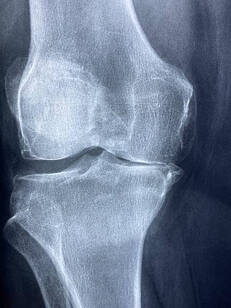Physiotherapy management of osteoarthritis
Osteoarthritis (OA) is a common complaint managed by physiotherapists and the need for effective management is clear. Physiotherapy encompasses a wide range of modalities proven to decrease pain and improve quality of life for patients that present with OA. These include manual therapy; therapeutic exercise; electrotherapy; education; weight loss strategies and braces or gait aids where necessary.
Exercise Therapy…
Randomised controlled trials have shown that a physiotherapy program combining strengthening exercises with manual therapy leads to a reduction in pain and increase in function in individuals with OA. Physiotherapists are experts in prescribing appropriate exercises for individuals so play a key role in the design, delivery, monitoring and progression of exercise programs, be it supervised in the clinic or for a home based program.
An American Geriatrics Society panel on exercise and osteoarthritis (Catz et. al.) concluded that “regular moderate level exercise does not exacerbate the pain or accelerate the pathological process of OA”. Instead, increasing the level of physical activity in OA patients was again proven to reduce pain and increase mobility. It was recommended that exercise programs be “individualised to each patient and focus on pain control, increasing flexibility and improving muscle strength and endurance.” It has also been found that in many cases, such intervention can significantly delay the need for surgical intervention on osteoarthritic joints.
A real example…
In 2014, a 67 year old male presented to our clinic with diagnosed OA of the medial compartment of his right knee. His patellofemoral joint was also affected. He had been referred to an orthopaedic surgeon, who had recommended a hemi-arthroplasty (replacement) for the knee. This man was not keen on surgery and presented to us on the recommendation of a friend to see if we could help.
I saw this man weekly for 6 weeks and treated him with a combination of lower limb stretches, patellofemoral mobilisation, iliotibial band release and electrotherapy. He also performed stretches daily at home, along with knee ROM, quadriceps, hamstrings and calf strengthening exercises.
He ended up postponing his review date with his surgeon, and participated in the National Lawn Bowls Championships in Tasmania, where he said he performed better than he has in years. A fantastic result for someone who thought he would be on the surgeon’s table within months!
*UPDATE - it's now May of 2022 and this man still hasn't needed his knee replacement and is still playing bowls*
I hope this summary will help you or someone you know. As always, we are here at The Physio Nook to help out with any musculoskeletal disorders you may have, arthritis or otherwise! Feel free to call us, email, or drop in for a great service.
Paul Woodward
Principal Physiotherapist
The Physio Nook.
Randomised controlled trials have shown that a physiotherapy program combining strengthening exercises with manual therapy leads to a reduction in pain and increase in function in individuals with OA. Physiotherapists are experts in prescribing appropriate exercises for individuals so play a key role in the design, delivery, monitoring and progression of exercise programs, be it supervised in the clinic or for a home based program.
An American Geriatrics Society panel on exercise and osteoarthritis (Catz et. al.) concluded that “regular moderate level exercise does not exacerbate the pain or accelerate the pathological process of OA”. Instead, increasing the level of physical activity in OA patients was again proven to reduce pain and increase mobility. It was recommended that exercise programs be “individualised to each patient and focus on pain control, increasing flexibility and improving muscle strength and endurance.” It has also been found that in many cases, such intervention can significantly delay the need for surgical intervention on osteoarthritic joints.
A real example…
In 2014, a 67 year old male presented to our clinic with diagnosed OA of the medial compartment of his right knee. His patellofemoral joint was also affected. He had been referred to an orthopaedic surgeon, who had recommended a hemi-arthroplasty (replacement) for the knee. This man was not keen on surgery and presented to us on the recommendation of a friend to see if we could help.
I saw this man weekly for 6 weeks and treated him with a combination of lower limb stretches, patellofemoral mobilisation, iliotibial band release and electrotherapy. He also performed stretches daily at home, along with knee ROM, quadriceps, hamstrings and calf strengthening exercises.
He ended up postponing his review date with his surgeon, and participated in the National Lawn Bowls Championships in Tasmania, where he said he performed better than he has in years. A fantastic result for someone who thought he would be on the surgeon’s table within months!
*UPDATE - it's now May of 2022 and this man still hasn't needed his knee replacement and is still playing bowls*
I hope this summary will help you or someone you know. As always, we are here at The Physio Nook to help out with any musculoskeletal disorders you may have, arthritis or otherwise! Feel free to call us, email, or drop in for a great service.
Paul Woodward
Principal Physiotherapist
The Physio Nook.


